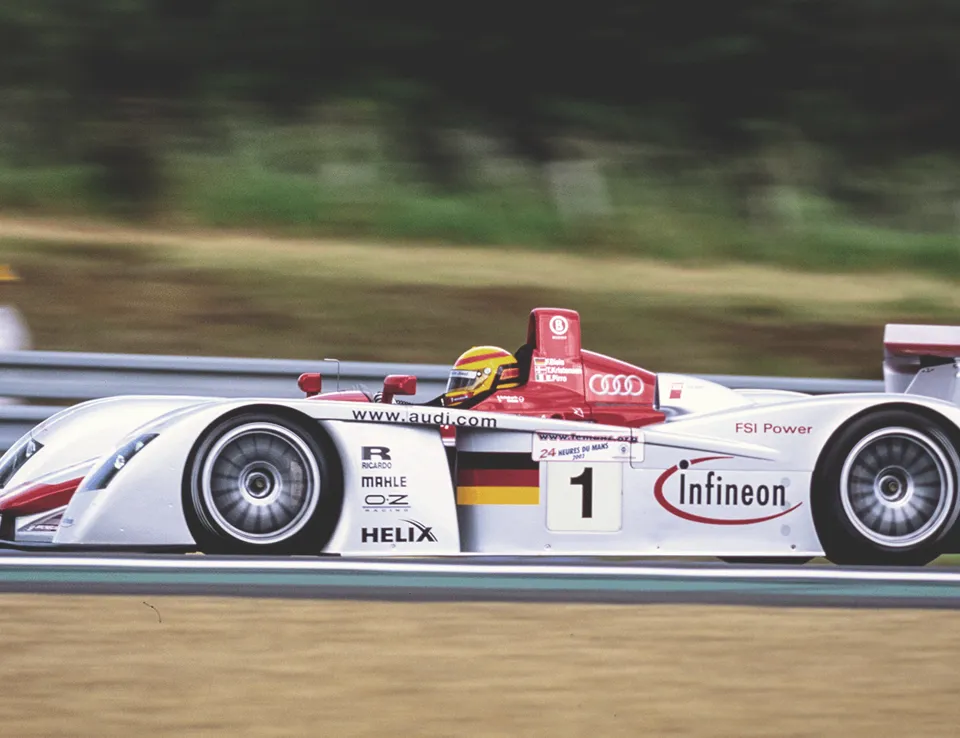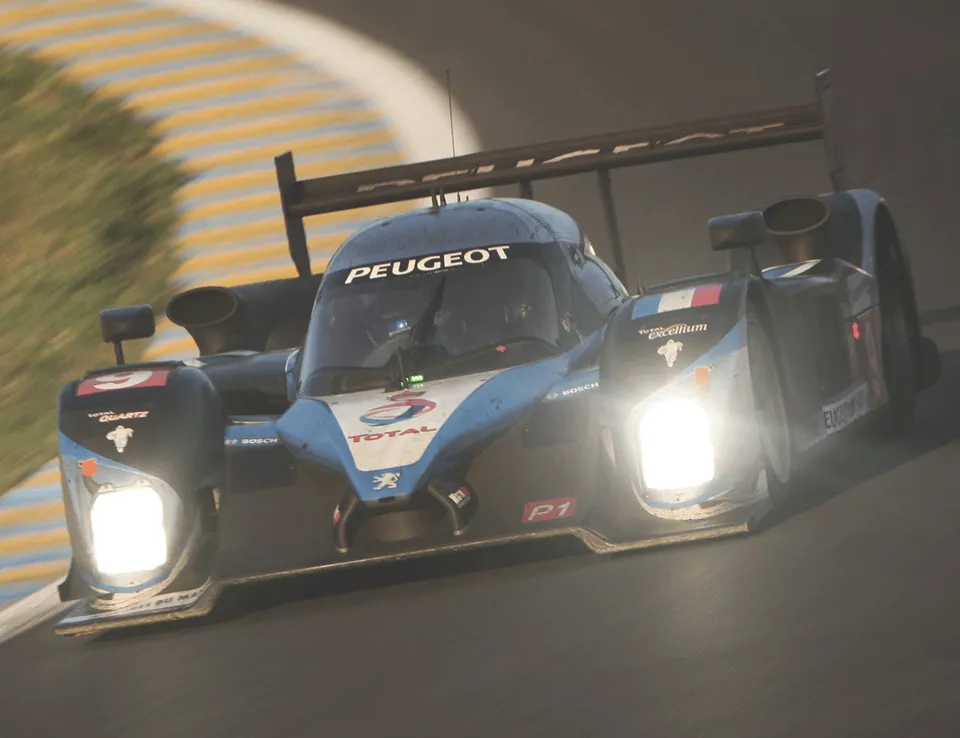
Reynard 02S: creating a chassis for multiple classes
25 Apr 2022
The competitive world of endurance racing pushes both the vehicle and the driver to their limits. It is an arena where achieving a balance between reliability and optimal performance is essential, presenting some of the toughest engineering challenges in the industry.
Ricardo engineers are no strangers to designing solutions for endurance motorsport. They understand that a flexible development approach, an in-depth knowledge of the full vehicle system, and an understanding of the intricacies of the sport itself are crucial to achieving that coveted podium finish. It was following the success of the Audi R8 at Le Mans that Ricardo was approached by Reynard Motorsport to develop a new gearbox for their Reynard 02S chassis.
The Reynard 02S: one chassis, two classes
In 2000 the Automobile Club de l'Ouest (ACO) changed the LMP classifications, splitting the open-cockpit category into the fast and powerful LMP900 and the small and nimble LMP675 classes. The Reynard 02S was designed to be multi-configurable so that it could run as either a LMP900 or a LMP675 chassis depending on the type of engine that was fitted.
The original requirement from Reynard was for Ricardo to design and manufacture an engine oil tank and gearbox combination that would allow fitment of several engine options into the same chassis. Possible choices for the powerplant were to range from small 4-cylinder turbo engines in a LMP675 , to 4-litre V10 engines in a LMP900 . The driveline would then manage the change of engine size, power, torque, and maximum engine speeds within the same chassis envelope.
Flexibility in design approach was critical in meeting a brief with so many variables. The overall engine length could vary depending on the configuration. As such, the provision of a bespoke engine oil tank for each engine option was envisaged to allow for this variation. Additionally, a transverse gearbox arrangement allowed for a shorter gearbox, enabling the flexibility to package longer engines in the fixed wheelbase of the vehicle. The gearbox would also need to cater for varying power and speed ranges. A combination of input bevel gear ratios and gear face widths, to control the maximum torque into the gear cluster and to allow a weight saving for chassis installations that didn’t need wide change ratios, enabled this.
Reliability was designed into the gearbox by using the proven internals used in the Audi R8 repackaged into a transverse arrangement. The same type of pneumatic Mega-Line gearshift system used in the Audi R8 was also provided for in the Reynard installation.
Flexible approach, maximum results
The chassis was launched in 2002 and continued in various iterations until the change in LMP regulations that obsoleted open-cockpit cars at the end of the 2016 season . The rights to the design would move through several owners but would become best known for its success under Zytek (rebranded as Gibson Technology in 2015).
Ricardo’s gearbox design also found a home in chassis designed by Creation, Radical Sportscars, Nasamax, Pilbeam, Embassy, and Welter Racing. A derivation of the gearbox was also used in the Epsilon Euskadi LMP1 chassis. The gearbox continues to run today in the Masters Endurance Championship.
Steve Blevins, Head of Engineering for Ricardo’s Performance Products segment, looks back at Ricardo’s involvement in the development of the Reynard 02S:
“The Ricardo LMP Transverse Transaxle shows how good design can lead to a product that remains competitive throughout its lifetime. The flexible configuration of the gearbox, based on well-proven internals, ensured we were able to provide multiple chassis manufacturers with a gearbox that suited each individual application perfectly. It’s great to see the gearbox design is still helping the chassis win in historic racing series today.”
Martin Starkey, Managing Director of Ricardo Performance Products, adds:
“Ricardo’s history at Le Mans and our capability to provide bespoke, novel solutions to the world’s toughest engineering challenges is at the core of our DNA. This is why Ricardo attracts and retains some of the world’s finest powertrain and drivetrain engineers and deploys this capability at the top tier of the motorsport industry and related markets. Nothing is more rewarding than seeing our expertise supporting our clients in clinching that top step on the podium!”
Ricardo’s approach to the design of the gearbox was key to ensuring a highly competitive commercial solution without compromise to quality and performance. Flexibility continues to be core to our delivery of engineering solutions for the fiercely competitive world of customer motorsport. We understand that it is essential to strike the right balance between reliability, cost, and performance to satisfy the requirements of this client base, which often differ to that of the factory racing teams.
Join us for next month’s retrospective when we will explore the world of cross-country rallying and review the development of Ricardo’s first Rally Raid gearbox.










